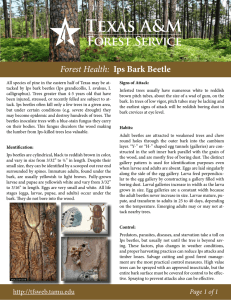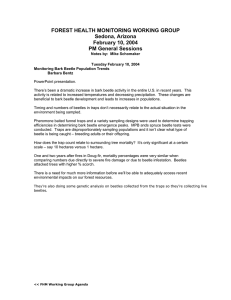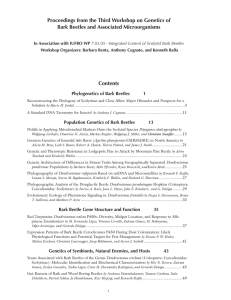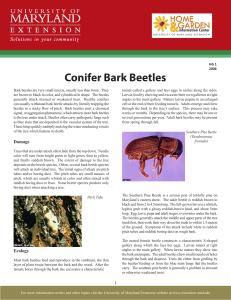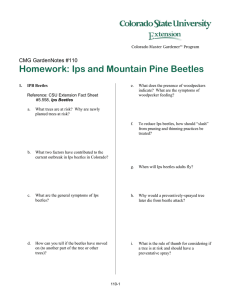Tree Health Issues Cedar Bark Beetle
advertisement
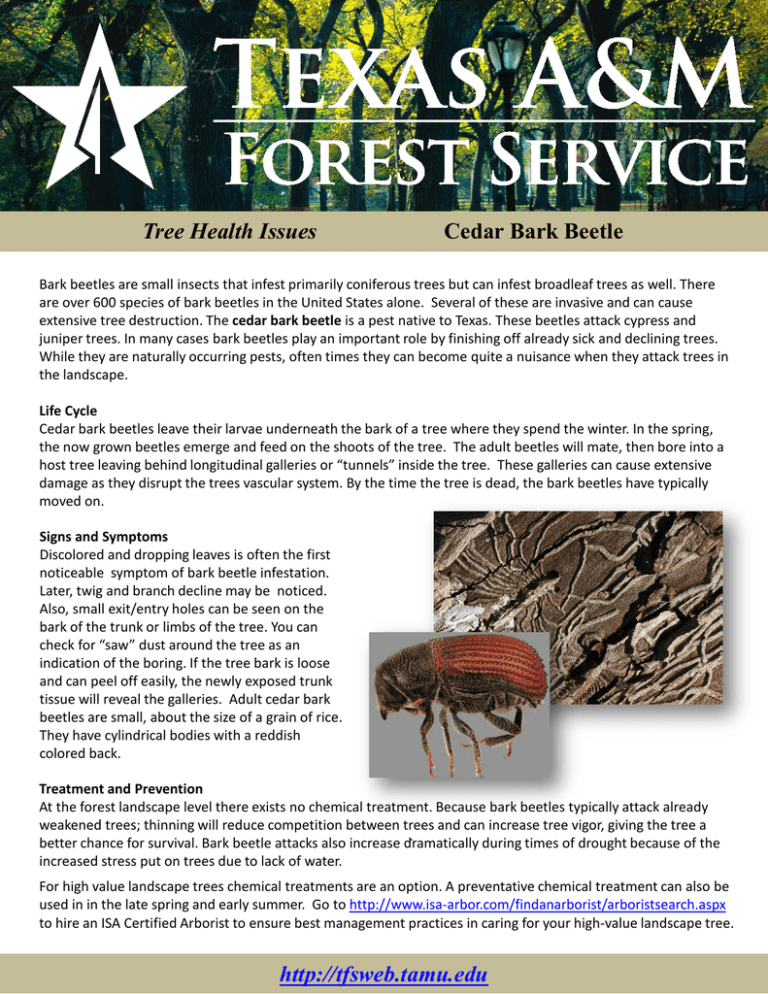
Tree Health Issues Cedar Bark Beetle Bark beetles are small insects that infest primarily coniferous trees but can infest broadleaf trees as well. There are over 600 species of bark beetles in the United States alone. Several of these are invasive and can cause extensive tree destruction. The cedar bark beetle is a pest native to Texas. These beetles attack cypress and juniper trees. In many cases bark beetles play an important role by finishing off already sick and declining trees. While they are naturally occurring pests, often times they can become quite a nuisance when they attack trees in the landscape. Life Cycle Cedar bark beetles leave their larvae underneath the bark of a tree where they spend the winter. In the spring, the now grown beetles emerge and feed on the shoots of the tree. The adult beetles will mate, then bore into a host tree leaving behind longitudinal galleries or “tunnels” inside the tree. These galleries can cause extensive damage as they disrupt the trees vascular system. By the time the tree is dead, the bark beetles have typically moved on. Signs and Symptoms Discolored and dropping leaves is often the first noticeable symptom of bark beetle infestation. Later, twig and branch decline may be noticed. Also, small exit/entry holes can be seen on the bark of the trunk or limbs of the tree. You can check for “saw” dust around the tree as an indication of the boring. If the tree bark is loose and can peel off easily, the newly exposed trunk tissue will reveal the galleries. Adult cedar bark beetles are small, about the size of a grain of rice. They have cylindrical bodies with a reddish colored back. Treatment and Prevention At the forest landscape level there exists no chemical treatment. Because bark beetles typically attack already weakened trees; thinning will reduce competition between trees and can increase tree vigor, giving the tree a . better chance for survival. Bark beetle attacks also increase dramatically during times of drought because of the increased stress put on trees due to lack of water. For high value landscape trees chemical treatments are an option. A preventative chemical treatment can also be used in in the late spring and early summer. Go to http://www.isa-arbor.com/findanarborist/arboristsearch.aspx to hire an ISA Certified Arborist to ensure best management practices in caring for your high-value landscape tree. http://tfsweb.tamu.edu

